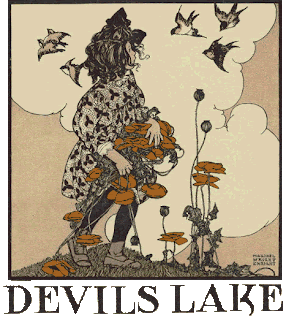Kathleen Johnson, SubterraneanRed (Mongrel Empire Press, 2012)
Kathleen Johnson’s Subterranean
Red treats of memory in the form of murmur and of snapshot. Like a
character in a gothic novel held captive by a ghostly lover, the poet is
haunted by a past she would rather escape and yet, despite herself, courts in
her imagination. This past is often evoked visibly in the series of family
photos that accompany the text, a technique reminiscent of Jeanetta Calhoun
Mish’s very successful Work is Love Made
Visible. Rather than bringing back the past, however, these pictures and
the poems which they accompany serve to remind the reader that what time has
broken can never again be made whole, that memory is always a matter of
arranging and rearranging the fragments. Remembering is imagining.
The theme of the past’s constant murmuring in the
consciousness of the poet is established in the collection’s first poem, “The
Apothecary of Minerva Best.” As throughout the book, memory presents itself as
both desirable and painful:
I’m
left with an ache as faint
and
elusive as the sound in
a
conch put to my ear.
The
ebb and flow now
no
more than a murmur
or
a memory.
The image of the conch summarizes well the way in which
memory is sought as a pleasure yet remains elusive and painful. Johnson adds to
this theme by the use of internal and occasional rhymes throughout the book.
The faint rhyming becomes a form of echo, of murmur. Take for example these
lines from “Three Generations of Cherokee Women: A Portrait,” in which she
describes her great-grandmother:
She’s
seen them come and seen them
go.
The stories she could tell
I’ll
never know. But her hands look like
they’ve
wrung a thousand chicken necks.
There is enough ghost of the iamb in these lines to accent
the rhyme of go and know, but the line breaks skillfully
work to half bury the rhyme. This effect is even more powerful in the beautifully
evocative “Wild Sand Plums”:
Roadside
sunflowers face the sun,
sway
in the wind.
Near
the cornfield, I bend
to
pick up a mottled feather.
The rhyme is of course both aural (wind and bend) and
visual, the figure in the poem bending in rhyme with the top-heavy sunflowers. Enacting
the way imagination constructs the past, the poem builds itself from echoes and
murmurs. Johnson’s poems are this carefully constructed throughout Subterranean Red.
Many of the poems in this volume are written in the psychologically
frank fashion we have for over half a century now referred to as
“confessional,” but these poems nevertheless recognize, as does the best work
of Robert Lowell, the role of imagination in framing and shaping memory. The
accompanying photos rather than representing proof of a definitive past are
offered rather as self-conscious constructions of family history. At times, the
photos, like the poems, represent an effort to remake that history, as in
“Granddad Scott”:
On
my wall I keep a picture
so
I won’t remember him just as a cruel man:
in
a white dress and turned-up cap,
he
is a blue-eyed baby
grinning
on
his daddy’s lap.
At other times they are emblems of something more like
negative versions of Wordsworth’s “spots of time,” as in “Father’s Day”:
And
I realize that the line from my dream
has
something to do with
this
picture, that even in sleep I cannot
rest,
but must forever watch
him
falling off that fence,
falling
to pieces.
In both versions, be it dream or wakeful and willed effort,
the photo represents the activity of the poet’s imagination. The pictures, like
the poems, don’t capture the past: they shape it. As Johnson says in “Following
the Red Hills Home,” “the imagined is as real as the rest of it.” It is
Johnson’s sharp imagination, along with her artistic presentation and
self-consciousness, that keeps the poems about, for instance, her father’s
philandering from descending into the sort of cheap latter-day confessional
poetry that relies on shock and attitude rather than on craft and rumination.
In “Raven Mocker” Johnson gives us the raven as an image of,
among other things, poetic inspiration, something beautiful but also dark and
dangerous. Such a bird is a fitting mascot for these poems, alive to the point
of tense contact with death itself, earthly scavengers yet transcendent in
flight. Subterranean Red is a
poignant, powerful book of poems that will be reread for many years to come.






